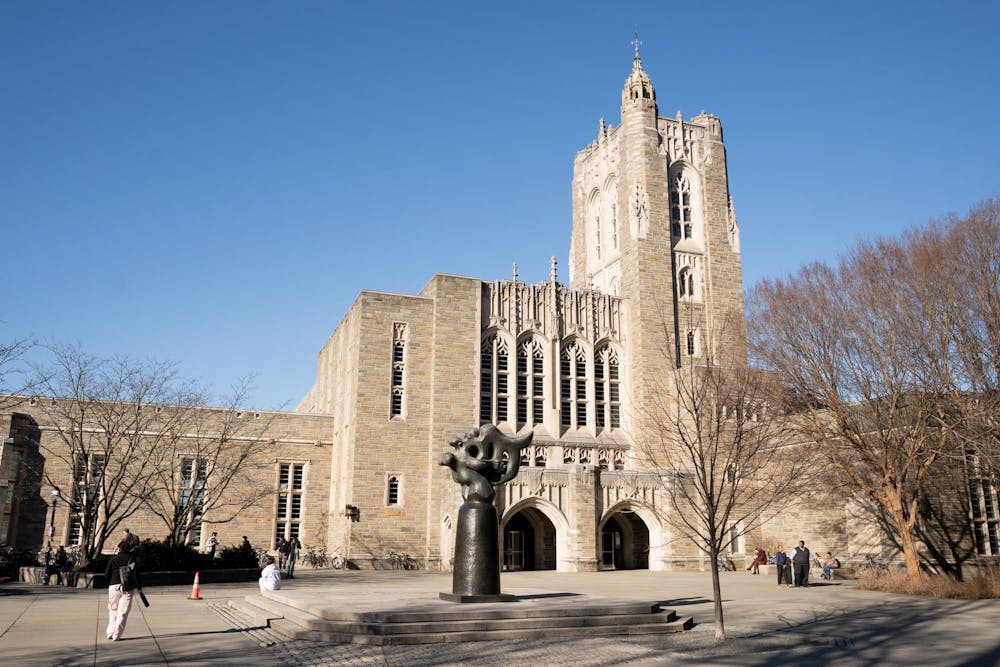Reset your alarms for next semester. Your first class is most likely being offered at 10:40 a.m., not 11. You have a little bit longer to get to class, though.
Course offerings were officially released on Thursday, March 27, with 134 new offerings among a total of 1,070 courses.
The School of Public and International Affairs (SPIA) and Department of History offer the most courses of any department, with 48 courses listed by the Registrar for next semester. The Department of Economics follows, offering 41 courses for the upcoming semester.
Literature and the Arts is the most popular distribution requirement for available courses with 282 courses fulfilling the requirement — a 45 course increase from last semester. QCR and SA also saw a surge in offerings.
Continuing a trend noted by an analysis of Spring 2025’s new course offerings, the visual arts, anthropology, African American studies, and history departments have expanded their course rosters. The Program in Visual Arts is offering seven new courses this upcoming semester, while the latter three each have six new courses.
New course start and end times reflect the University’s decision last year to extend passing times between classes to 15 minutes. Morning and afternoon classes are most impacted by this shift, as 10:40 a.m. to 12:00 p.m. is the most common time for classes to be in session.
In a written comment to the ‘Prince,’ University spokesperson Jennifer Morrill wrote that “the additional passing time between classes will help students in a number of ways, most importantly by ensuring that students can get from one end of campus to the other without leaving one class early or arriving to another class late.”
Courses are no longer required to start in strict 30-minute intervals. The most common course start times were 10:40 a.m. and 1:20 p.m.

“For afternoon courses that meet for 50 or 80 minutes, the 1:20 start time ensures adequate time after the end of the course meeting for students to travel across campus to a course at 2:25 or 2:55, respectively. Instructors who are teaching a three-hour lab or seminar can elect to start at either 1:20 or 1:30, whichever better suits their pedagogical and curricular needs,” Morrill wrote.
There are three courses offering international travel in Fall 2025: JRN 449: International News — Migration Reporting, ANT 455: Visible Evidence — Wildlife Films and Multispecies Documentary, and FRE 388: Theater Making in the Age of Climate Change. They are traveling to Germany, Kenya, and France, respectively. These courses were found by searching “travel” or “trip” on the Registrar’s course offerings page.
Professor Deborah Amos, whose course JRN 449 will be traveling to Berlin, Germany, wrote to the ‘Prince’ that students will have the “experience of an international correspondent.” The class is centered around pitching a journalistic piece that will be developed during fall break. Amos writes that she “[serves] as an editor rather than a professor,” leading to a “very hands-on experience.”
Professor Florent Masse wrote that FRE 388’s travel opportunity to France “[augments] understanding of the course work, while perfecting one’s language skills since French is spoken throughout the trip.” Interested students must apply by Friday, April 18.
Junior course selection will be on Wednesday, April 16, sophomore course selection will be on Thursday, April 17, and first-years will select their classes on Friday, April 18. Add/drop for Fall 2025 courses will begin on Monday, April 28, and end on Friday, May 2.
Caden Kang is a Data contributor for the ‘Prince.’
Please send any corrections to corrections[at]dailyprincetonian.com.








